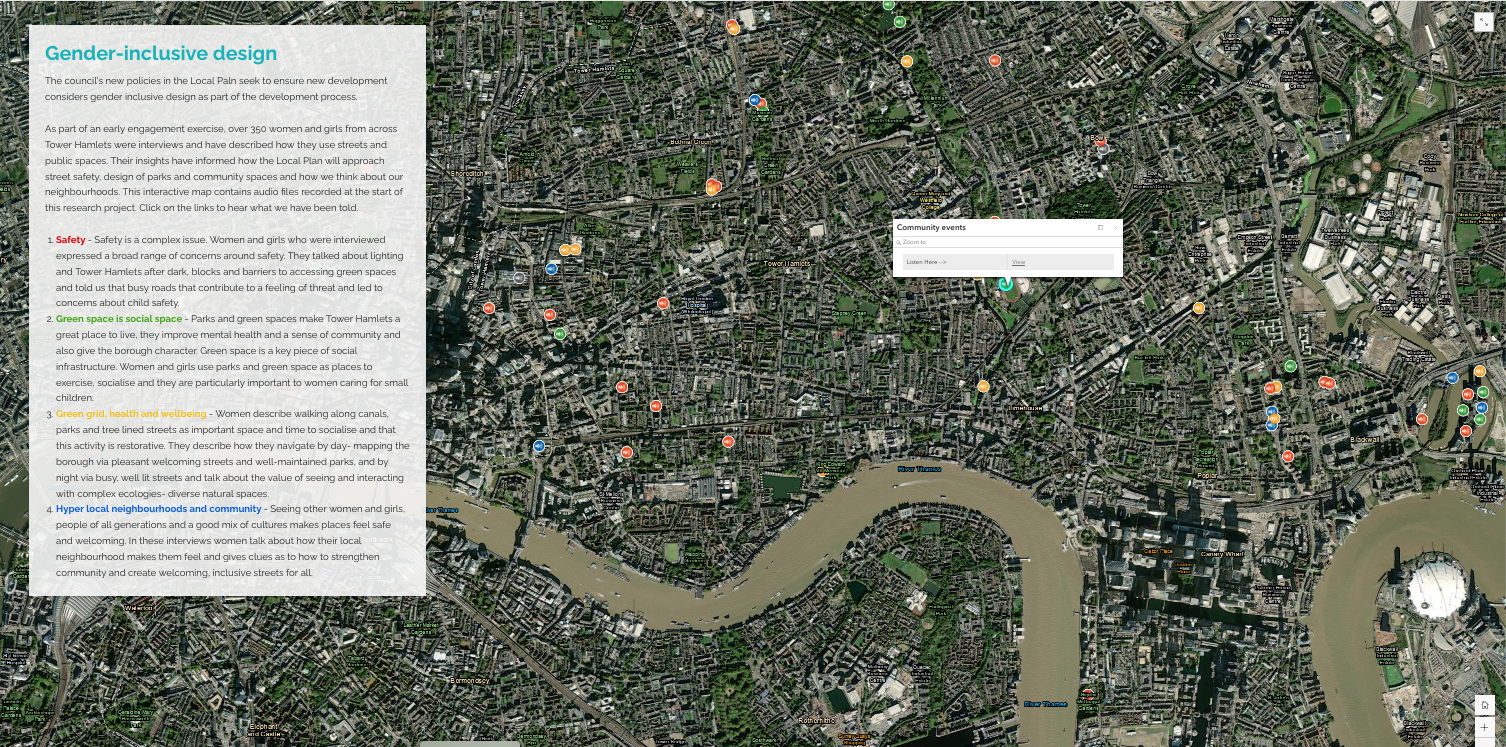This is for the majority
Co- writing design guidance with women & girls in London Borough of Tower Hamlets.
This is for the majority_gender inclusive design, (click here to read) is written with input from almost 500 women and girls from across London Borough of Tower Hamlets.
I undertook an inclusive approach to research. Establishing the scope of the work by recording street interviews, then developing workshops, collaborating with teams across the council and researchers from Queen Mary University to deepen my understanding of specific themes. The design guidance addresses the complexity of urban gendered experience.
This document has been used through Reg 18 and 19 of the local plan. The work has shaped a specific inclusive design policy and I have worked collaboratively with other officers to aggregate through each of the policies in the Local Plan.
Excerpt from ‘This is for the majority’:
Historically towns, cities and public spaces have been planned and designed by and for a small
cohort of able bodied, white men. This fact does not undermine or judge their contribution, it is
merely a statement of fact that provides insight into the shape of built world we have inherited.
Cities are an ongoing human project to co-create, make and re-make spaces that both speak of who
we want to be ‘now’, and how we wish to be perceived in the future.
To live here is to navigate a patchwork of histories and the legacy of structures, systems and
institutions that had limiting views of women and girls, disability and neurodiversity, race and
ethnicity and sexual and gender identity. This perspective has shaped a city that favours and
celebrates the lives of ‘successful’ men from the fine detail to the big picture. From street names and
public sculptures through to a skyline of blocks and towers that replicate male power, to a transport
system designed for a smooth daily commute ‘into’ town. We live amongst and navigate a built
environment that is out of step with a contemporary culture which explicitly values plurality,
inclusivity and diversity.
Architecture makes our culture legible. It communicates the aspirations and values of the dominant
culture (i.e. those with capital). Planning shapes this language, providing the grammar and the
structure but also holding space for conversation, collaboration or indeed robust push and pull
between the will of the market and the needs of the community.
Cities play a vital role in production, consumption and reproduction of gendered norms and biases
and are themselves shaped by gender embodiment and the experiences of its inhabitants. Gender
and feminist studies show that women and men experience the built environment differently, and
insufficient attention to women’s needs within planning processes reproduces gender inequality
Street Interviews:
Story Map created for REG 18 community engagement on the Local Plan, summerises the audio research.






 A huge thank you to Public Practice for this valuable oportunity
A huge thank you to Public Practice for this valuable oportunity
.
Tower Hamlets Plan Making Team & to the inspiring women who are already working in this field.

